#northern blackware
Text

Bowl with Flared Rim and “Partridge-feather” Mottles
China, Northern Song (960–1127) or Jin dynasty (1115–1234), late 11th/12th century
34 notes
·
View notes
Text
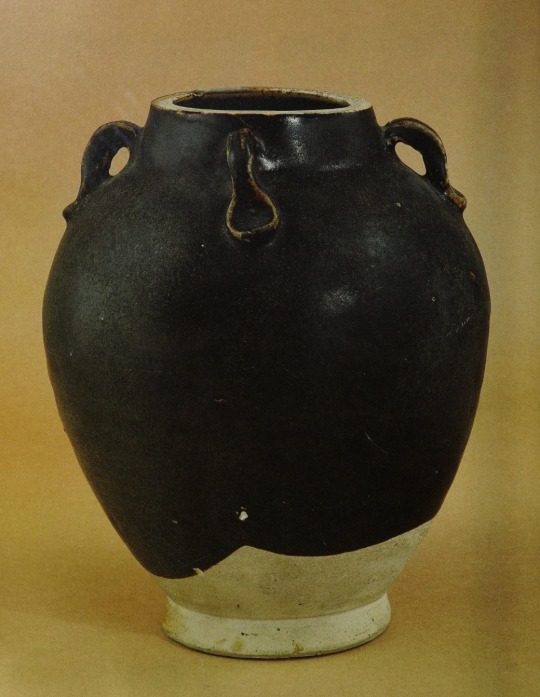
“Black glazed jar, Tang dynasty, north China. The dull black glaze and the light-firing stoneware body are typical of ordinary northern blackwares from this period. H. 8 in., 20.3 cm. Ashmolean Museum, Oxford”
From: “Chinese glazes: their origins, chemistry and re-creation” by Wood Nigel; 2007.
17 notes
·
View notes
Photo

Teabowl, 1115, Art Institute of Chicago: Asian Art
Gift of Dorothy Braude Edinburg to the Harry B. and Bessie K. Braude Memorial Collection
Size: H. 5.6 cm (2 1/4 in.); diam. 10.9 cm (4 5/16 in.)
Medium: Northern blackware, Cizhou type; stoneware with dark brown glaze and overglaze russet flecks
https://www.artic.edu/artworks/193058/
18 notes
·
View notes
Text
Jian ware

In the book “Chinese Glazes, Their Origins, Chemistry, and Recreation” by author Nigel Woods, chapter seven talks about the brown ware and black ware in Chinese ceramic history. Providing an in depth chemical insight from geographic location and time period in clay and glaze development.
Jian ware created in Jiangsu, which is located on the south east coast of China near the Yellow Sea. The Jian ware glazes have been excavated as far as the northern Fujian province.Huge kilns called dragon kilns were used to fire thousands of tea bowls in one firing. Dragon kilns are long, narrow, curved forms built on a slope. The fuel used was wood.
Although the glaze percentages for each ingredient are still unknown, it is thought that the glaze is made up mainly of the same clay used to make the tea bowls. A thick coat of wood ash and glaze with iron added to the mix was painted or poured over the surface of the bowl. These were then covered with a large unglazed bowl form turned upside down, called a saggar. The atmosphere inside the saggar then helped the thick layer of glaze create the folds and oil spot textures as it melted on the surface in the heat of the fire. These textured glazes have become well known in Jian ware.
The beginning of the Jian wares was approximately 1000 years ago and lasted into the late 14th century. Variations of gemmokus glazes are still popular in present day ceramics. Both for utilitarian ware and sculptural forms.
Jian ware blackware glazes are interesting in that the similar recipes created so many variant finishes. Two of the most known are the hare’s fur temmokus and the oil spot temmokus. These both were found in the Jian kilns located in Fujian province, The photos below are examples of the glazes mentioned above.

Artist/maker unknown, Chinese. (12th or 13th century; Northern Song (960-1127) or Jin Dynasty (1115-1234), Image: 8/15/2012). Jar. Retrieved from http://library.artstor.org.ezproxy.fhsu.edu:2048/asset/AWSS35953_35953_41351762
Artist/maker unknown, Chinese. Jar. 12th or 13th century; Northern Song (960-1127) or Jin Dynasty (1115-1234), Image: 8/15/2012. Philadelphia Museum of Art Gift of Charles H. Ludington from the George Crofts Collection, 1923 http://www.philamuseum.org/collections/permanent/40801.html. http://library.artstor.org.ezproxy.fhsu.edu:2048/asset/AWSS35953_35953_41351762. Web. 12 Apr 2018

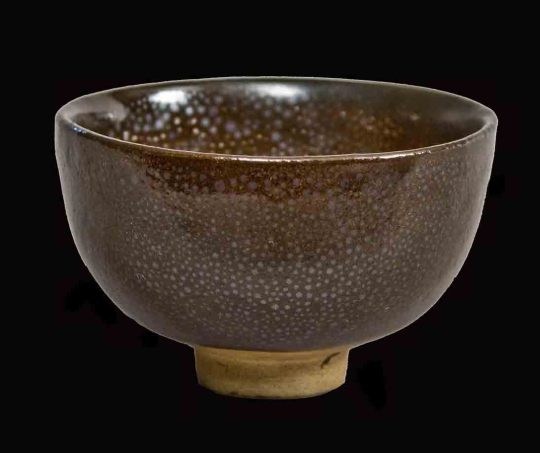


This rare partridge spot glaze was found at the Fujian kiln
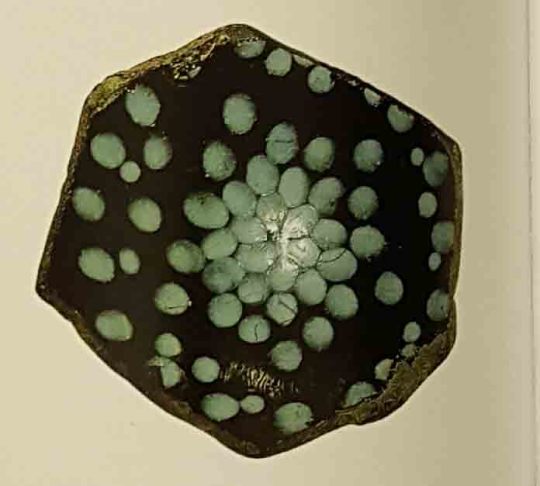

Reading about the bread down of the chemical composition and firing of the dragon kilns provides a great respect of the potters who persevered in the development of the clay body, glaze testing, and discovering how to control the high temperature of the dragon kilns.
These ancient people are role models for present day potters to stay to experiment and develop rich textured glazes for the surfaces of clay forms now.
0 notes
Text
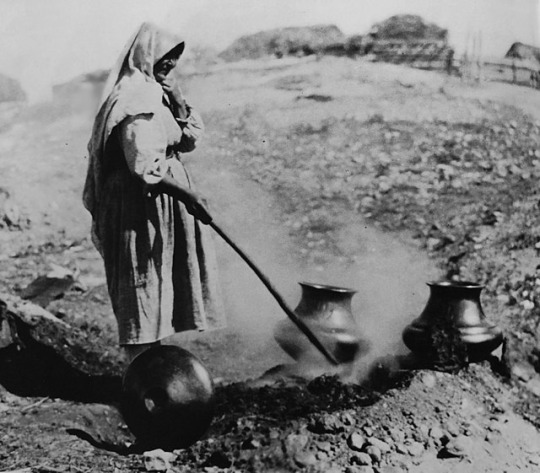
Tewa artist, Sara Fina Gutierrez Tafoya, native name "Autumn Leaf" pit-firing blackware pottery at Santa Clara Pueblo (Kha'po Owingeh), Northern New Mexico around 1900.
98 notes
·
View notes
Photo

Teabowl, 1100, Art Institute of Chicago: Asian Art
Gift of Dorothy Braude Edinburg to the Harry B. and Bessie K. Braude Memorial Collection
Size: H. 4.0 cm (1 9/16 in.); diam. 8.9 cm (3 1/2 in.)
Medium: Northern blackware, Cizhou type; stoneware with black glaze and overglaze russet flecks
https://www.artic.edu/artworks/159684/
11 notes
·
View notes
Photo
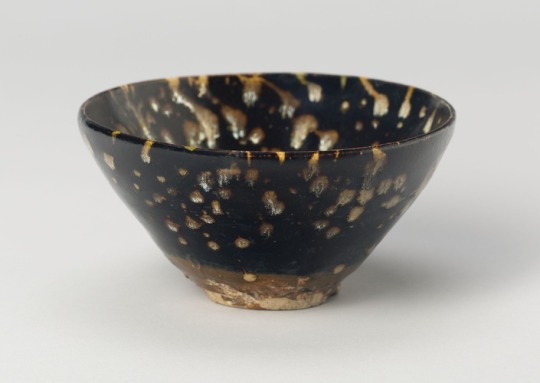
Teabowl, 1115, Art Institute of Chicago: Asian Art
Gift of Dorothy Braude Edinburg to the Harry B. and Bessie K. Braude Memorial Collection
Size: H. 5.6 cm (2 1/4 in.); diam. 10.9 cm (4 5/16 in.)
Medium: Northern blackware, Cizhou type; stoneware with dark brown glaze and overglaze russet flecks
https://www.artic.edu/artworks/193058/
15 notes
·
View notes
Photo
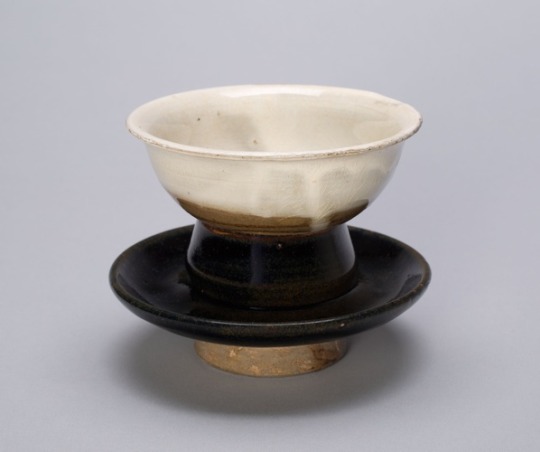
Cup and Cupstand, 1100, Art Institute of Chicago: Asian Art
Gift of Dorothy Braude Edinburg to the Harry B. and Bessie K. Braude Memorial Collection
Size: H. 7.6 cm (3 9/16 in.); diam. 10 cm (4 9/16 in.)
Medium: Northern blackware, Cizhou type; glazed stoneware with dark bronze glaze (saucer); white slip under transparent glaze (cup)
https://www.artic.edu/artworks/193053/
7 notes
·
View notes